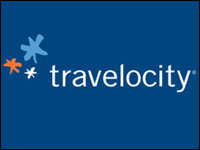
Travel Web sites were among the first category of e-commerce ventures to actually make a buck a decade or so ago. It is astounding, therefore, that recent industry reports show a deep dissatisfaction among many users of these portals. In particular, Forrester Research recently reported on the failings of several of these sites, both in terms of tools and customer service.
We decided to conduct our own examination. Over the next several weeks, the E-Commerce Times will publish reviews of some of the top travel-planning Web sites. We’ll take a look at how user-friendly the site is and how it compares with competitors on such criteria as pricing, number of providers, return policies and special features.
We begin with Travelocity, one of the most established brands in this market. The mission: to buy a ticket from Baltimore, Md., to New Orleans, La., for the first week in October.
I chose this route, because it’s one I fly a lot. Industry lore has it that that the dirty secret of many online retail categories, including travel, is that once a user has been identified as a regular buyer of a certain product, the price for that individual — or, more precisely, for the IP address associated with the repeat buying behavior — mysteriously skews upward.
Travelocity does not appear to use that trick, however. I recruited a friend who has never purchased a ticket to New Orleans to use the site to shop for a ticket on the exact flight I targeted. His price — half an hour after I ‘bought’ my ticket — was in fact US$50 more.
Traveling Gnome
Let’s start at the beginning. Go to Travelocity’s Web site, and the first image that greets you is the iconic Traveling Gnome that has branded the company’s advertising. Sadly, that image is quickly replaced with banner ads for the various features for the rest of the site — from package deals to tools to bargains. It’s distracting, especially if you are visiting the site for a specific purpose — say, to purchase an airplane ticket.
Still, it’s easy enough to find the fields where you enter your flight info. After a few clicks, my choices were displayed before me. Not surprisingly, given Travelocity’s presence in the space, I saw offerings from just about every airline that flies the Baltimore to New Orleans route.
I found 56 one-stop flights going to New Orleans on October 5; 61 altogether. Travelocity’s layout makes it easy to identify the cheapest band of flights, which for my search were offered by US Airways starting with a ticket for $134.
The lowest offering, shortest duration flight I found was scheduled to leave BWI at 5:10 p.m. and arrive in New Orleans at 9 p.m. A nifty feature in this field — the percentage of on-time arrivals — told me that particular flight registers only 67 percent. Whether that’s considered “good” by industry standards, I did not know; however, as I would have to transfer in Charlotte, N.C., with little time to spare, and I would be asking someone pick me up at the airport in New Orleans, I wanted a more reliable flight.
I settled on one scheduled to leave at 7:30 a.m. So far, so good — although I saw the $134 ticket price I originally eyed slip away. At that point in the process, Travelocity gave me the option of navigating to igougo.com to compare the same flight on 10 different sites including competitors Expedia.com, Hotwire, TripAdvisor, Kayak and Orbitz.
It’s a great add-on for users — or so I thought, until 10 different windows populated my screen from each site. It was too confusing to do a line-by-line comparison, but a quick scan showed me I was not being grossly overcharged.
I completed the transaction by selecting a nonstop (yes!) return flight on AirTran for October 9.
Checkout Pain
It was when paying for the ticket that I experienced my first serious bout of ire with Travelocity. I saw that I was about to be dunned $19.95 for trip protection — a smallish box was automatically checked, requiring me to uncheck it to avoid paying for a service I didn’t want.
I also saw that I was being charged $29.95 for a paper ticket, with no way to switch to an electronic ticket. A call to the site’s 888 number (I zeroed out of the automated system to quickly reach an operator) revealed why: AirTran did not have the appropriate agreements in place with other airlines for electronic ticket purchases, said customer rep Jessica. My total payment due then came to $252.75.
For travelers with time, money and no specific destination in mind, Travelocity is a virtual playground: It offers a range of options and packages from cruises, to hotels, to day trips. Coupons and bargains are featured prominently throughout the site — as part of the background ad clutter as well as via a Deals tab on the front page that I didn’t notice at first.
I clicked it to see if I could sign up for future bargains on the same route. Five minutes later, I found I was able to purchase the same ticket I just “bought” on sale for $194.25. I made another call to the 888 number and spoke to Sharelle, who attempted to explain why the price was $50 cheaper than five minutes earlier. Airlines change prices frequently, she said, and I might have accessed the system right after the price was downgraded. My friend, though, “purchased” his ticket shortly after I ended my conversation with Sharelle, and he could only get the original $252.75 price. Moral of the story: Explore the Web site’s “deals” and purchase your ticket under that tab.
Value-Add Clutter
The on-time stats Travelocity offers are emblematic of the site in general: It is chock full of helpful value-add features that — if you don’t have a specific task in mind — can quickly distract. It offers categories for green travel and “voluntourism,” both of which kept me in daydream territory for a good half hour. Car rentals, day trips and hotels are offered up at every turn of the planning process and oftentimes are accompanied by user reviews and other third-party data helpful in making a decision.
Travel sites love customers who purchase packages or multiple services, of course, and Travelocity is no exception. The prices, at least based on one package I checked out, appear to be well negotiated. Using my Baltimore-New Orleans trip as a benchmark, I looked into booking a hotel in New Orleans for the week: $616 later, I had booked five nights in the Iberville Suites in the French Quarter on a round-trip ticket leaving at the ungodly hour of 5:50 a.m. on AirTran. There was also a $30 shuttle fee that the site would not let me jettison. Thirty bucks, based on my hazy understanding of a taxi ride from the airport to the Quarter, was about right, so I accepted it.
I didn’t actually pay for the ticket, but if I had, Travelocity was ready to offer me a wealth of e-tools to stay on top of my trip details. They included flight status alerts, baggage fee information, online check-in, Travelocity Mobile, Frommer’s Guides and a low-fair alert. I could even sign up for Twitter updates on deals — or to become a fan of the Roaming Gnome to follow his adventures.
Bottom line: Don’t let the clutter drown out what you really need to see. I didn’t notice the Deals tab until my second pass on the site. Also, make sure you don’t inadvertently buy the trip protection.

























































I appreciate your candor regarding the Travelocity site. Just as you have discussed in the past the abandonment at checkout, I have abandoned using Travelocity. I find their practices dishonest. I have NEVER gotten a final price as posted on airfare. They always come up with a higher price and claim the price has just changed. I stopped using them because of bait and switch. Also, did you ever try to get credit or a refund from those sites? Good luck. I worked for 60 days to get money back after a flight was cancelled and no airline would honor the useless ticket from Expedia at the airport. After their fees were removed, I realized this was not a deal at all!